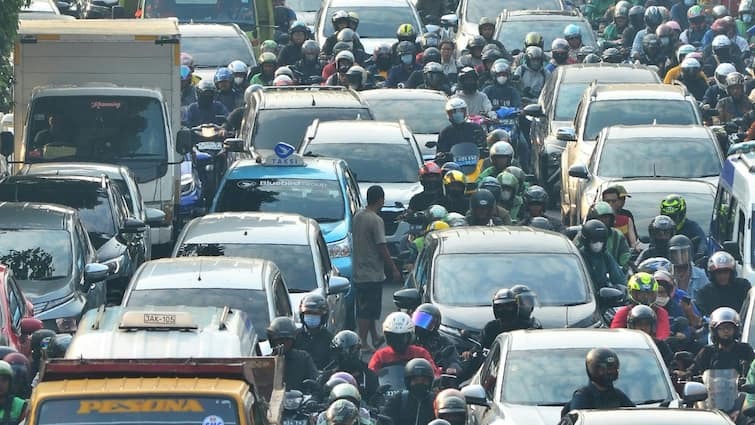
In 2024, Kolkata claimed the title of India’s most congested city, surpassing Bengaluru, according to the annual traffic index released by TomTom, a Dutch location technology firm. The report paints a sobering picture of increasing traffic congestion across urban India, highlighting Kolkata’s challenging travel conditions.
Kolkata Tops India’s Traffic Congestion List
The study found that drivers in Kolkata required an average of 34 minutes and 33 seconds to travel a mere 10 kilometers in 2024. Bengaluru, which previously held the top spot, closely followed at 34 minutes and 10 seconds for the same distance.
Kolkata's average speed in 2024 was recorded at 17.4 kmph, slightly slower than Bengaluru's 17.6 kmph. The data underscores the growing challenges of navigating through urban traffic in these metropolitan areas.
Global Perspective: Indian Cities Dominate the Slow-Speed Rankings
The congestion issue isn’t confined to India alone, but the country’s cities are prominently featured in the global rankings of slow travel speeds. Kolkata ranked second globally for the slowest average travel time, clocking 33 minutes and 22 seconds to travel 10 kilometers at an average speed of 18 kmph.
Other Indian cities, including Bengaluru and Pune, took third and fourth places respectively on the global list, further emphasizing the nationwide issue of slow urban travel. The global top spot was claimed by Barranquilla, Colombia, where drivers faced an average speed of 10.3 mph (16.5 kmph) and a travel time of 36 minutes for 10 kilometers.
Other Congested Indian Cities
The report also highlighted other Indian cities grappling with traffic woes:
- Ahmedabad and Ernakulam recorded an average travel time of 29 minutes for 10 kilometers.
- Jaipur followed closely with a travel time of 28 minutes for the same distance.
Traffic Woes Across the Globe
The TomTom study, which analyzed traffic conditions in 500 cities worldwide, revealed that 76% of these cities experienced slower average speeds compared to 2023. The global trend reflects the mounting pressures of urbanization and infrastructural limitations.
Reasons Behind Rising Congestion
Ralf-Peter Schäfer, Vice President of Traffic at TomTom, attributed the worsening traffic congestion to several factors:
- Outdated Infrastructure: Many urban road networks are unable to cope with modern traffic demands.
- Inefficient Road Planning: Poorly designed urban layouts contribute to bottlenecks and delays.
- Urbanization Growth: The increasing population in cities places additional strain on existing transportation systems.
Schäfer emphasized the need for cities to invest in smart infrastructure and efficient traffic management systems to alleviate the growing problem.
Call for Action
The report serves as a wake-up call for policymakers, urban planners, and transportation authorities. The worsening traffic conditions in cities like Kolkata, Bengaluru, and Pune highlight the urgent need for:
- Modernized Infrastructure: Upgrading roads, bridges, and public transport systems.
- Sustainable Urban Planning: Incorporating traffic flow optimization in city designs.
- Encouragement of Public Transport: Reducing dependency on private vehicles by enhancing public transport options.

 Share
Share



